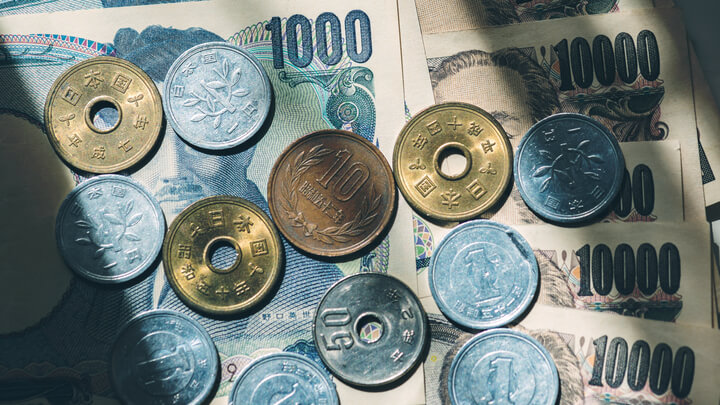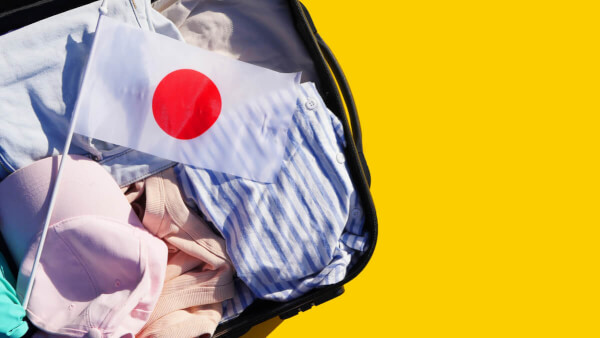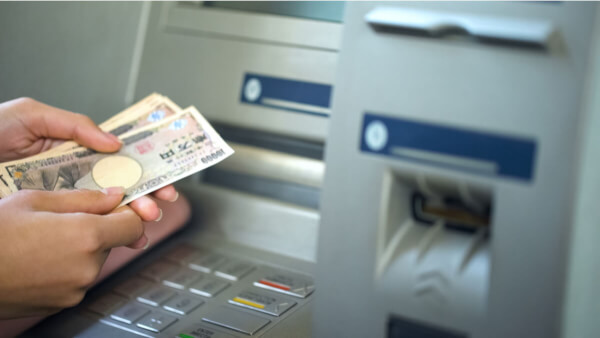The ultimate Japan packing list (2024)
In this article, explore the ultimate Japan packing list. Discover must-have essentials for a seamless and memorable journey through this fascinating country.

Japan’s vibrant cities and peaceful country resorts see it receive an astonishing number of visitors from abroad. In the summer of 2016, over 2 million tourists arrive in Japan from overseas each month from all over the globe. Whether you want to ride on the bullet train, eat the world’s best sushi or take a ski trip to the northern highlands, you can find it in Japan.
If you’re planning a trip to the land of the rising sun, then you're going to need some cash. Life in Japan isn’t cheap, but the unique experience is worth it.
This guide gives an overview of the currency and banking systems in Japan so you can get - and spend - the Yen you need.
The official currency in Japan is the third most traded currency in the world.
| Japanese Yen Characteristics | |
|---|---|
| Yen Symbols | JPY, ¥, 円 |
| JPY coins | Coins come in 1, 5, 10, 50, 100 and 500 Yen denominations. |
| JPY banknotes | Notes are available for larger amounts - in 1.000, 2.000, 5.000 and 10.000 Yen denominations. |
The coins in Japan are deliberately minted to have different styles, sizes and patterns. Some coins have holes in the middle, for example, and others have ‘reeded’ edges to make them easily distinguishable from each other.
Foreign currency isn’t really accepted in Japan, so you’ll need to exchange some money for your trip.
Do your research and compare exchange rates before you travel to Japan, as you may well find that exchange rates are better once you arrive.
Wherever you exchange your cash, make sure you shop around to get the best deal. The best way to do that is to make sure you understand the mid market rate.
The mid-market rate is also known as the ‘interbank rate’ - it’s the only real exchange rate. Any tourist rate directly will correspond to this number. It constantly fluctuates, so in order to compare to see if you’re getting a fair deal, you’ll need to get the latest information by using a currency converter online.
If you need currency upon arrival, you can change a small amount at the airport or your hotel - although the exchange rates are usually less favourable than those in town. Another option in the international airports is to use an ATM. This is an option favoured by many travellers for convenience and security.
If you do decide to exchange cash when you’re in Japan, watch out for hidden fees. Even if an currency exchange service claims ‘Zero Commission’, they generally add in their profit to the poor exchange rate they offer. Pick wisely.
If you’re exchanging cash in Japan, make sure that the notes you present for exchange are clean and undamaged. Any dirt or damage might result in the notes being rejected by the exchange service.
Traveller’s Checks aren’t accepted for direct payment in Japan. If you have them, they’ll need to be cashed at a bank or, in some cases, an exchange service. The rates you’ll be offered are rarely favourable and you’ll find that not every bank branch or service can make the exchange for you.
More and more travellers are avoiding Traveller’s Checks these days and using bank cards and ATM withdrawals instead. Consider whether this is a better option for you, too.
Although things are changing, Japan is still quite a ‘cash’ society. Large retailers, hotels and restaurants will accept credit and debit cards, but smaller outlets will not. Be prepared and carry cash at all times to help manage this.
You’re never far from an ATM if you get stuck - there are links in the next section to help you find one nearby if you find yourself without cash. Where cards are accepted, you should be fine with any of the major card providers.
To make sure your bank card is accepted, it’s worth telling your local bank that you’re travelling. If you don’t, they might see freeze your card for ‘suspicious activity’ while you’re abroad.
If do you choose to spend on a credit or debit card, is Dynamic Currency Conversion (DCC). If you’re at an ATM and get asked if you want to be charged in your home currency - that’s DCC in action.
It may sound great to be able to grasp what you’re actually being charged, but unfortunately it’s not a great ‘service’. Accepting DCC leaves you exposed to the ATM’s poorer exchange rates, not to mention possible extra fees. Always opt to pay in the local currency (JPY), instead. (This will then allow your home bank, who has an interest in keeping you as a customer, give you a much better exchange rate.)
ATMs in Japan are widely used and quite common. Use one of these locator tools to find networked ATMs near you.
Visa ATM locator
MasterCard ATM locator
Amex ATM locator
It is worth asking your home bank what they charge for foreign currency withdrawal, and also looking at the ATM itself to see if any further fees are applied there. Many ATMs have relatively low withdrawal limits. Although you can make several withdrawals one after another, this can be costly if your bank charges a per-transaction fee.
DCC can be applied at the ATM, too. (See the previous section for an explanation.) If you’re asked if you’d like to be charged for the withdrawal in your home currency, it’s best to refuse. Always select to be charged in local currency for the best deal.
Banking in Japan is dominated by three large ‘Mega Banks’ which are listed below. These institutions have branches throughout the country, so they’re probably the most useful place to head if you’re looking to exchange cash or access other services.
If you’re going to Japan it is a good idea to see if your home bank has a partnership in place with any Japanese banks - or even if they have a branch near your destination in Japan. Many international banks have a presence in Japan as it is one of the world’s leading financial centres. Check out the list of suggestions below.
These days, many travellers are choosing Wise for simple access to money abroad - and an even better deal - wherever you’re headed.
If you have a bank account in Japan, or know someone who does, you can transfer money between countries using the real mid market exchange rate. It's a convenient way to get your cash, with no hidden fees.
*Please see terms of use and product availability for your region or visit Wise fees and pricing for the most up to date pricing and fee information.
This publication is provided for general information purposes and does not constitute legal, tax or other professional advice from Wise Payments Limited or its subsidiaries and its affiliates, and it is not intended as a substitute for obtaining advice from a financial advisor or any other professional.
We make no representations, warranties or guarantees, whether expressed or implied, that the content in the publication is accurate, complete or up to date.

In this article, explore the ultimate Japan packing list. Discover must-have essentials for a seamless and memorable journey through this fascinating country.

Everything you need to know about using ATMs in Japan.